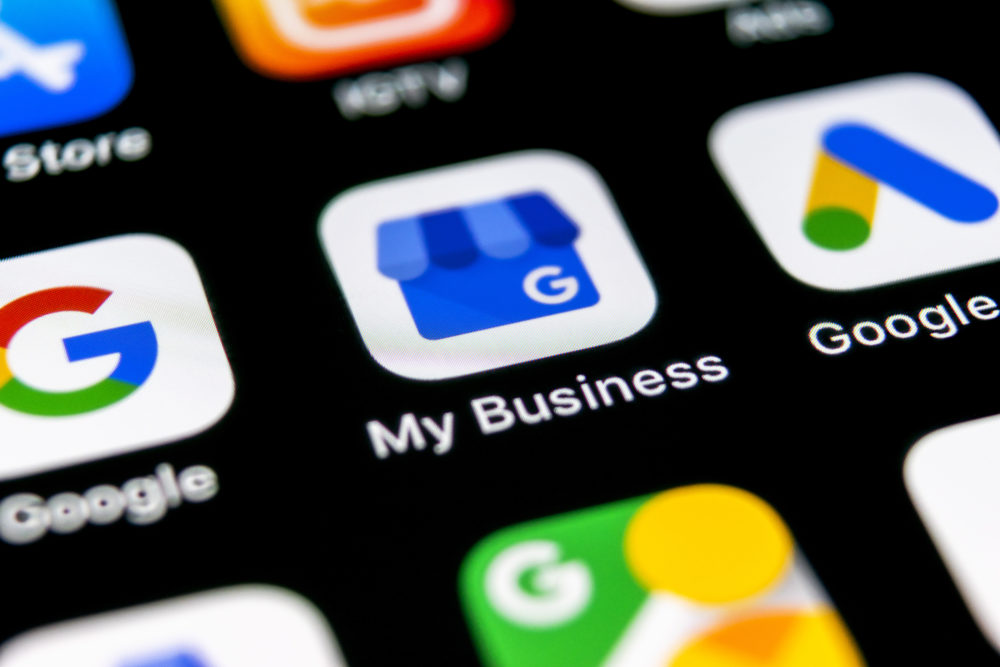According to Google, more than a third of small businesses say increasing business growth is their primary goal over the next year.
Fortunately for local and independent businesses, ‘near me’ Google searches hit a record high in 2019. There was 14 times more search interest for these searches than in 2014 and 400 times more than ten years ago.
The top searches (aside from Tesco, Asda, Co-op and other chain retailers) are:
- Shops near me
- Chinese near me
- Pubs near me
- Local news
- Taxi near me
- Supermarket near me
Pub owners will be raising a pint as search interest for local pubs is at the highest level since 2009, tripling over the last decade. Top related searches feature ‘local pub food’, ‘local pub quiz’, ‘local pub restaurants’ and ‘dog friendly pub near me’.
Even though they’re looking locally, consumers are still doing their research online. A huge 90pc of EMEA (Europe, the Middle East and Africa) shoppers who visited a store say they searched online first. Yet 23pc of small businesses don’t publish any contact information of their stores on their website, meaning that they could be losing out to their web-savvy competitors.
Google My Business
You’ve probably seen Google My Business (GMB) before when searching for ‘restaurants/barbers/florists near me’.
The listing will display the name of your business, its rating on Google Reviews, opening hours, address and contact details. Depending on the kind of ship you run, you can list a menu or a list of services too. Customers then have the option to make bookings directly through your listing.
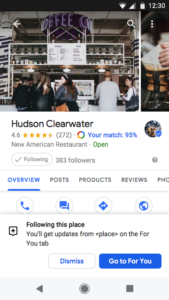
Despite being so helpful, 71pc of UK small businesses don’t manage a search engine listing or map listing for their business. It’s easy to set up GMB in a few clicks and track updates through the accompanying app. Or if you’re right at the beginning, Google will help you create a fully mobile-optimised website in less than ten minutes.
This year, Google has added new functionality where you can add your branding as well as a cover photo and a selection of photos that really show what your business is about. To clinch even more customers, you can add limited time offers to new shoppers.
Basic analytics on the tool help you monitor engagement including clicks, calls, bookings and follows. Review these performance metrics in your Business Profile.
Not only that, you can control how your business appears on search and Maps. If you run a service-based business – say you’re a plumber or a gardener – you can let customers know where you’re based.
Remember to keep up-to-date with your listing. Customers say that businesses which respond to reviews are 1.7x more trustworthy than businesses that don’t (76pc vs 46pc).
Research also shows that customers are 70pc more likely to buy from a website than ones that don’t.
Google/Ipsos research shows that:
- 96pc of customers are more likely to visit a business that has opening hours on their Google Search or Maps page
- 90pc are more likely to visit a business with a phone number in its listing
- 90pc visit websites with photos
- Two out of three respondents react well to positive reviews
However, you should be aware that the tool is open to reviews from anyone online. Unfortunately you can’t request the removal of these reviews. You can flag them and if they breach Google’s review guidelines, then they’ll be removed.
Pamela Tironi is the managing director of The Pizza Room. She tells us how Google My Business promotes the company.
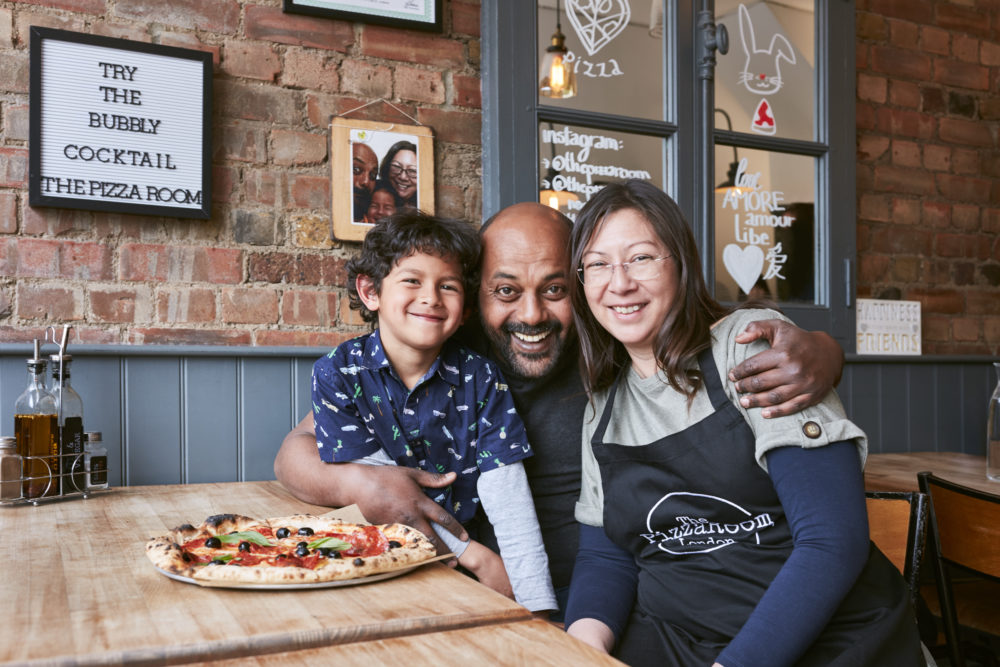
The Pizza Room started in London’s Mile End, an area that’s been heavily destroyed by the WWII bombings. Half of the street was affected, so it’s only one line of shops, which is unusual for a high street. There’s not much space, so there aren’t so many shops – it’s more residential. The shops themselves are really small too, around 60 metres squared.
I want to build the business over time with the personal touch. Being local helps that: there’s less competition and there’s more connection to the local residents.
Restricted by geographical location
Google My Business provides the peace of mind that your business has a presence online, especially for a small local business that doesn’t sell elsewhere, just in the local neighbourhood.
The problem is that people forget that you’re there. It’s helpful for them to see us popping up when they search online.
We don’t really do much with Google My Business except talking to customers and sometimes updating information. It’s a good thing for me because you don’t need to do a lot of maintenance every day. With Facebook, for example, you have to post every day if you want to maintain an audience. As we can’t do that, I don’t bother investing too much because I know that it’s wasted time and wasted resources. Facebook campaigns have less than a 1pc conversion rate.
Getting company authenticity across
The pictures feature on Google My Business is really helping. When you see the restaurant, there’s not much you can add to it. When we take a picture of a product, that is the product itself. It would be different if I used a plastic apple. We don’t do anything like that.
Spotting and dealing with fake reviews
Look out for reviews that don’t have comments, that are just a rating. Be wary of comments that aren’t related to your business, are generic or just make no sense. For example, one time we had a review that wasn’t fake, but was from a friend of a friend who wasn’t happy with us. The friend asked the friend to post a review. You can read around the comment.
We check the people who leave a bad review. The account looks dodgy if it only has a few reviews which are always negative. We don’t actively encourage people to leave reviews – they do it spontaneously. But reviews are something that we’re working on because it’s important that we get feedback.
The Pizza Room is also on Deliveroo, Ubereats and JustEat but that’s more about the visibility. If you’re present to many millions of people, then why not? They might come to the shop as well.
Market Finder
A whopping 79pc of businesses say that the majority of their revenue comes from domestic sales, according to Google research. However, 70pc of SMBs lack market insights to find the best target market for expansion.
But using market insights based on your product, Google’s Market Finder can tell you which countries would be best for you to export to, maximising your reach and sales.
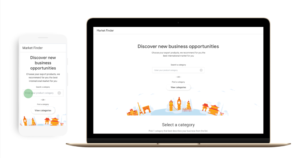
It will tell you how your potential customers use the internet and how much disposable income they have. From there, use Market Finder’s tools and guides to learn more about essentials like localisation, international payment and logistics.
You can research different countries so that if you’re an international business, you could see how your website performs relative to each country that you trade in.
When you’ve established which countries you should be exporting to, formulate your marketing plan by targeting the devices that your customers use and deciding what language you should advertise in.
Grow My Store
Grow My Store will give you a diagnostic breakdown of your website’s customer experience, covering checkout process, site performance, information available to customers and more.
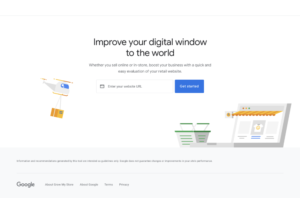
Once completed, you’ll receive a personalised report with recommendations on how to improve customer experience. You’ll be rated based on keywords relating to each customer experience section. If the tool finds certain keywords in ten pages of your URL, you’ll pass that section.
To help you improve your site, your results will be linked to a series of comprehensive guides that are relevant to your business’ needs.
Smart Campaigns
This tool was specifically designed for small businesses, letting you write up an ad that describes your business and set a budget. The ad will appear when customers in the target area for your business search for keywords related to your business.
You only pay when people click your ad and the whole thing involves minimal management on your part. In any case, you can review how effective your ads have been in the Smart Campaigns dashboard.
Features include:
- Campaigns overview (Google-generated performance insights)
- Critical accounts alerts (notifications about your campaign, billing issues, etc)
- Verified calls (the number of calls from campaigns, including clicks)
- Map actions (the number of times people saw your ad and clicked your business pin on Google Maps or got directions to your business)
- Track actions on your website with Google Analytics (measures how well your website meets your business expectations)
- Ad scheduling
To help further stimulate growth, the information in your ads and the content on your site will be used to create and test alternative ads. Both old and new ads will be run to find out which is more effective.
Grow with Google
Learn new skills face-to-face for free in the Digital Garage. Find a list of available courses and coaching sessions to register for on the Digital Garage website. At the time of writing, Google listed courses in coding, digital marketing strategy and Google Analytics for beginners.
If you’re not able to make the events then grow your skillset online with tutorials covering Google Ads, Analytics Academy, Google Marketing Platform and more.
It’s not just for start-ups and small businesses – you’ve got content for personal growth like training videos to help you get ready for your next job or tools and tips to help with self-promotion.
Register directly through Google, either through your account or as a guest.
